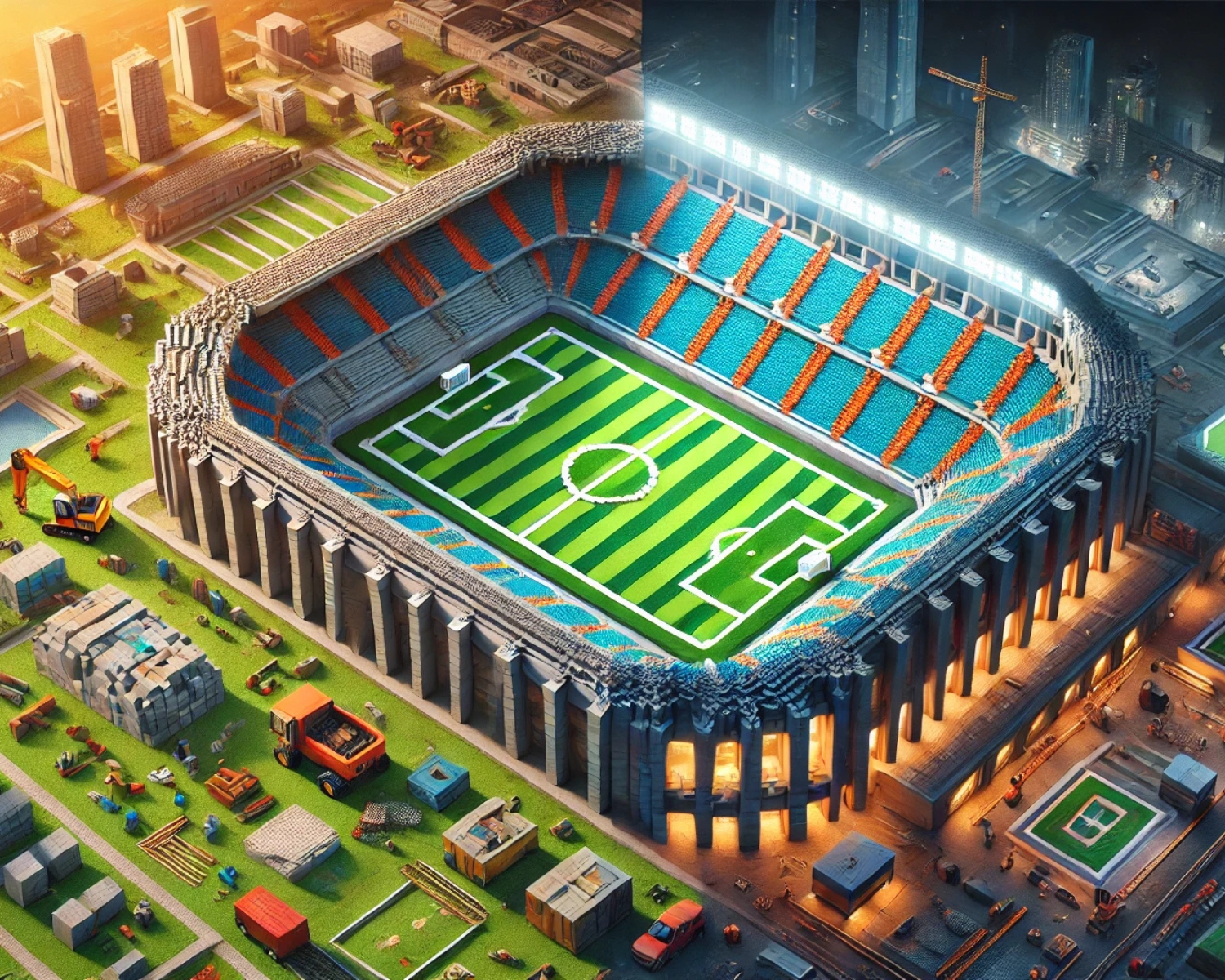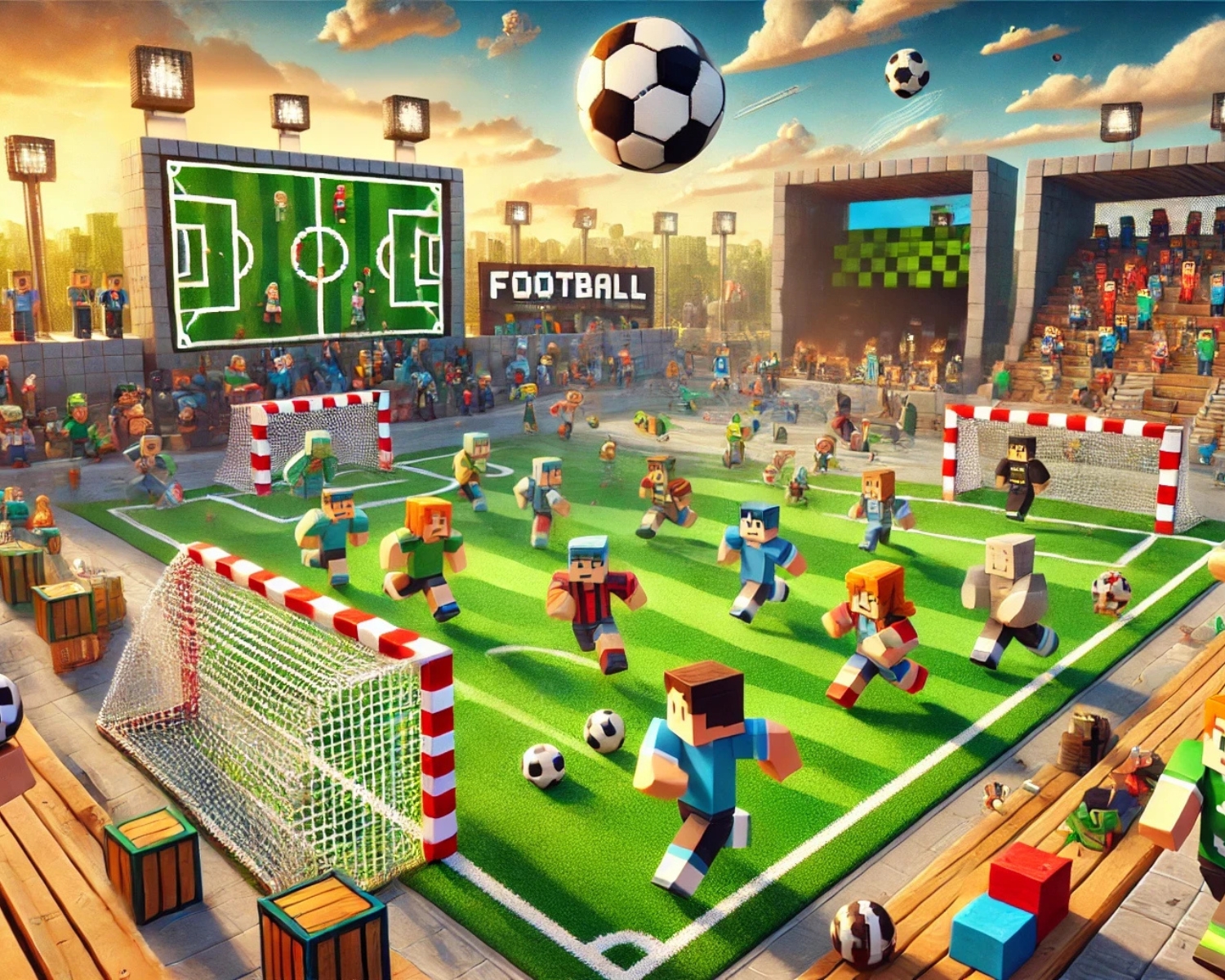
How to Create a Football Stadium in Minecraft: Step-by-Step Guide
Introduction
Building a football stadium in Minecraft can be a fun and rewarding challenge for any player. Whether replicating a real-life stadium or designing your custom creation, the key to a successful project lies in attention to detail, creativity, and patience. With the proper planning and the right tools, you can construct a stunning stadium that brings the excitement of the game to your virtual world. Here’s a step-by-step guide to help you create your own Minecraft football stadium.
1. Choose the Location and Size
Before building, choose a flat area in your Minecraft world with plenty of space. A football stadium is large, so you’ll need to find a location that gives you ample room to create the field, seating, and surrounding infrastructure.
- Location Tip: If you’re building outdoors, ensure the area is free from mountains, lakes, or other obstructions that could interfere with your design.
- Size: A standard football field is approximately 120 blocks long and 80 blocks wide. This will give you a good starting point for your stadium’s dimensions. You can adjust the size based on your preferences, but this size is a solid foundation for building your pitch.
2. Build the Football Field
Now that you have space let’s focus on creating the football field. Of course, the field is the most essential part of the stadium.
- Step 1: Use green wool, grass blocks, or green concrete. Alternate between grass and green wool to create a more realistic playing surface. Make sure to outline the goal areas at both ends of the field.
- Step 2: Mark the boundaries, goal box, penalty area, and halfway line with white wool or concrete. For a more detailed effect, add corner arcs and center circles.
- Step 3: Add goals at each end. To build the goalpost, use iron bars or fences to create the frame and white wool or concrete for the crossbar and posts. Remember to add the net behind the goals using white string or cobwebs.
3. Create the Stands
The stands or seating areas are an essential part of your football stadium. They add a lot of visual appeal to your design. Ensure the stands surround the field and offer plenty of space for fans.
- Step 1: Choose a material for the seating. Popular choices include stairs (for the bleachers) or stone slabs. Start building the seating area by placing rows of seats on one side of the field, then extend the stands to the other. Leave space for aisles between rows.
- Step 2: Add additional tiers or levels to the stands. To create a multi-level stadium, stack more rows of seating on each other. You can use stone bricks or stone slabs to create different levels.
- Step 3: For the VIP or press box, build a raised platform with glass panes for windows and extra seating. Use stone or wood for the structure, and add a few stairs for access.
4. Add the Roof and Exterior Details
Your stadium’s roof can be as complex or as simple as you want. Some stadiums feature large roof structures, while others may have just simple coverage for the seating area.
- Step 1: Use glass blocks or white wool to create a canopy-style roof above the stands. If you want a more extensive roof, use stone slabs or wooden planks to give it more shape and structure.
- Step 2: Build entrances and exit doors around the stadium’s exterior. Use wooden or iron doors with redstone circuits to create realistic entryways.
- Step 3: Add other minor details, such as scoreboards (using item frames, levers, and buttons) and light posts around the stadium to illuminate the field at night.
5. Final Touches and Landscaping
Now that the stadium’s major parts are complete, it’s time to add the finishing touches to make it feel more full.
- Step 1: If you want a realistic stadium, landscape the surrounding area with grass, trees, or parking lots. You can also use path blocks or stone slabs to create walkways to the stadium entrances.
- Step 2: Add banners with your team’s logo to the stands or place decorative flags around the stadium to give the stadium a festive, sporting atmosphere.
- Step 3: Use lights or lamps to brighten the stadium at night. Glowstones or sea lanterns also create well-lit, realistic nighttime conditions.
Conclusion
Creating a football stadium in Minecraft is an exciting project that allows you to showcase your creativity and attention to detail. Whether playing solo or collaborating with others, designing a stadium can enhance your Minecraft world and bring a new level of realism to your gameplay. With a solid plan, the right materials, and a little patience, you can build a stadium that will impress your friends and add a great space for your in-game matches. Happy building!
#Minecraft #FootballStadium #MinecraftBuilding #MinecraftCreations #CreativeBuilding #MinecraftDesign #GameBuilding #MinecraftTips #FootballInMinecraft #MinecraftGuide






